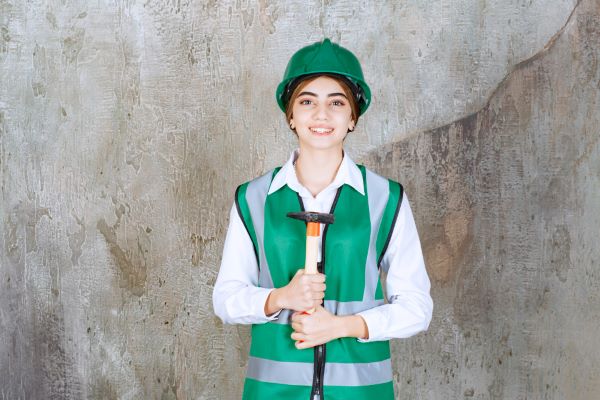Industrial Workwear in India: For the Needs of Female Workers
In the traditionally male-dominated industrial sector, the workforce is evolving rapidly with an increasing number of women coming in. This change has affected everything within industrial operations, even down to workwear. That means industrial workwear must be redesigned with safety, comfort, and functionality in mind to match Indian female workers' special requirements.
This blog explains how Indian industries in the industrial workwear segment have risen to the challenge of making them inclusive and functional.
The Growing Presence of Women in Industrial Roles
Industrial participation of women in India over the past decade has seen a gigantic leap. Whether it’s in manufacturing, construction, mining, or even logistics, women are breaking barriers and proving their mettle. This new deluge of female workers has brought to the forefront the deficiencies of traditional workwear that was primarily designed for men. Workwear that does not fit well not only reduces safety but also impacts the efficiency and comfort of women at work.
Key Changes in Industrial Workwear for Women
1. Tailored Fits and Sizes
Probably the biggest change in industrial workwear is the introduction of tailored fits and a greater range of sizes, specifically for women. They are built differently than men. Their physiology requires different accommodations in workwear design. Now companies have workwear that reflects those differences, providing better fits that have both safety and comfort benefits. Tailored fits reduce accident risks from flowing garments and provide mobility to see that women carry out their duties efficiently.
2. Ergonomic Design
Ergonomics is an important consideration in designing industrial workwear. In the case of women workers, ergonomic considerations include not only fit but also pocket placement, areas of reinforcement, and flexibility in movement. Workwear is being designed to accommodate the physical demands of various industrial jobs while ensuring that women can move freely and comfortably. This includes features such as adjustable waistbands, contoured seams, and stretchable fabrics.
3. Enhanced Safety Features
Workwear protects against dangers in the industrial area. Female-oriented workwear has added more safety features, such as knees strengthened for crawling and kneeling, flame-resistant materials, and highly visible materials to enhance more protective clothing. Furthermore, PPE, like helmets, gloves, and safety boots, are now being manufactured to fit women properly both by size and design, reducing the risk of injury.
4. Climate-Appropriate Materials
India's diverse climatic conditions pose a lot of challenges regarding workwear for industries. Women working in hot and humid conditions require breathable fabrics, allowing moisture wicking with ventilation. Those in colder regions need insulated clothing that retains warmth without bulk. Advanced materials that can deal with these climatic challenges are being integrated by manufacturers while retaining durability and safety standards in industrial workwear.
5. Cultural Sensitivity
Cultural sensitivities are high in India, and respect toward traditional attire and modesty is contained. Women's industrial workwear has recently been designed by taking into account cultural sensitivities, such that appropriate coverage for cultural norms can be catered to, like longer tunics, higher necks, and looser fits, all to ensure a woman can work feeling comfortable and respected in her workplace.
The Road Ahead: Challenges and Opportunities
The way ahead is still fraught with difficulties. The major challenge is sensitizing employers to the need to provide gender-specific workwear. Many industries still use unisex or male-oriented designs that might not be comfortable for their female employees. Another challenge is the need for constant research and development to come up with innovative and quality industrial workwear for women.
Opportunities exist for manufacturers and designers who are willing to be players in this growing market. Manufacturers can collaborate with female workers to solicit input and also understand their particular needs, allowing a sector to compose items that improve the safety and productivity of women working industrially.
The changes in the industrial workwear sector have become a very important step toward making workplaces more inclusive and equitable. As more women enter the industrial workforce, demand for individualised, safe, and comfortable workwear will only increase. In doing this, the Indian industrial workwear sector is not just matching its pace with women's empowerment; an example has been set to the world of standing at the forefront on the tracks of innovation and inclusivity.
Check us out at Unito for more.




